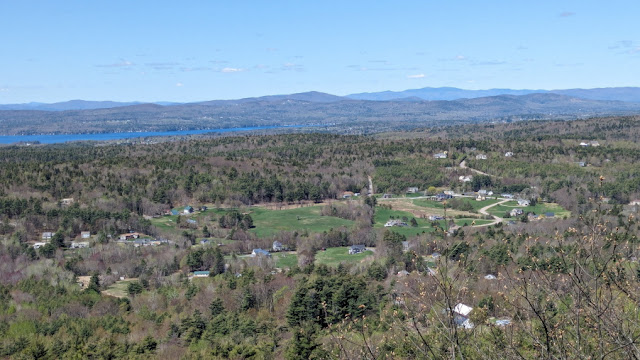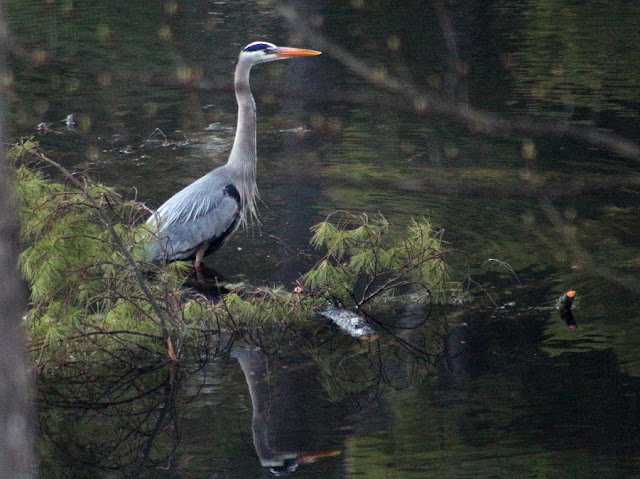Nesting season is now in full swing; I'll start with land.
 |
| Hermit Thrush nest built into a depression in the ground. |
I never would have seen this Hermit Thrush nest if the bird sitting on the nest hadn't flown out right in front of me as I walked past it. The nest is right beside what must be a lightly used trail or it wouldn't have selected that spot. But otherwise it's perfect, beautifully hidden under a hemlock branch and some small plants.
 |
| The undisturbed appearance of the nest. |
I held the hemlock aside to take a picture and then went quickly on my way. The Hermit Thrush is one of several birds that make their nest on the forest floor, from the Oven Bird - named after the dome-shaped nest it builds - up to the much larger turkey. In the case of Hermit Thrushes, it's the male that constructs the nest, though the female may help with the interior decorating, lining it with soft finishing touches. Field guides say she usually lays three to six eggs, so maybe there's more to come.
Mallards also make nests on the ground, usually hidden under a shrub or other small plant. Our Mallard family has already hatched their eggs and mom has been out on the lake with her six little ducklings.
 |
| One of our Mallard families. |
Next up is a nest in the air. Visiting an area of young forests I heard the call of the Chestnut-sided Warbler and stopped to peer into the dense jungle of trees. I never found the warbler, but I did find what has all the characteristics of a Chestnut-sided Warbler nest: a tightly built nest of grasses and other plant material woven around multiple stems of a young sapling five to ten feet above the ground in a young successional forest.
I didn't climb in to see if there were eggs in this nest.Finally, on the water, there is this exciting nest:
 |
| The northern loon pair has nested. |
The northern loon pair has selected a site, built a nest, and is assumed to be sitting on an egg or two. With a telephoto lens I was able to take a picture far enough away to not disturb the loon as shown by its head-up position. When feeling threatened a loon on a nest will put its head low down against the ground to hide and to be in a position to quickly leave the nest for the safety of the lake. Eagle-eye Amy W. spotted it on May 23rd, just a couple of days after there were territorial battles being waged between the pair and an intruding loon, possibly the Paugus Bay loon we saw two weeks ago.
 |
| Our pair made it quite clear what the intruder would be dealing with if it sticks around. |
I guess they decided it was time to send him packing before they nested.
Trees are mating now also - in their own way - as shown by the quantity of pollen covering everything, including the lake on a calm morning.
The Black Cherries are doing their thing too.
They're always a beautiful sight, and will continue to be so right through the summer as their deep red fruit matures.
The state flower, the lilac, seems to be having a good year too with lots of blooms all around town.
 |
| These lilacs are along Chemung Rd. |
Finally, everyone's favorite, the Pink Lady's Slipper:
I'm seeing a lot of them this year - hopefully you will too!












































